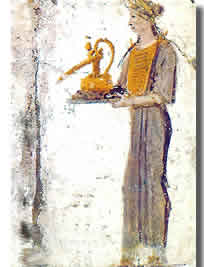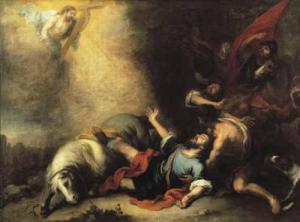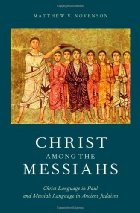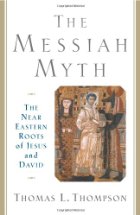That sensational title was supposed to grab your attention. However, my remark was “not intended to be a factual statement.” Frankly, most of the things I believe in (or, rather, theories I subscribe to) are fairly ordinary. I thought it was P.J. O’Rourke who once said that thinking outside the box was overrated — “There’s plenty of good stuff still inside the box” — but I can’t seem to find a reference. Maybe I imagined it.
Defending the status quo
You may recall a few months back when I defended the venerable Documentary Hypothesis against a scholar who did not understand it at all. I own books by OT minimalists, and I have great respect for Thompson, Lemche, et al. However, I still find myself more persuaded that the creation, transmission, and redaction of the Hebrew Bible followed a process similar in most respects to the one described by Wellhausen and Friedman.
Similarly, while I may entertain doubts about Q, I’m still a proponent of the Two-Source Hypothesis. I own a copy of The Case Against Q, and I’ve read a couple of the chapters more than once. Goodacre asks a lot of probing questions that do not yet have fully satisfying answers, and his contribution to Synoptic Problem scholarship is undeniable. However, I am still firmly in the 2DH camp.
Why am I an old fuddy-duddy when it comes to Wellhausen and Streeter? Because these standard models in particular have a great deal of explanatory power and compelling coherent logic. So while it’s true that many people “stay inside the box” because of inertia and lack of imagination, oftentimes it’s just as likely that there’s nothing outside the box that explains things better than the boring old standard model.
But that’s not to say that we should ignore new ideas. The dominant hypotheses in source criticism (the DH in the OT and the 2SH in the NT) aren’t set in stone. I’ll be the first to admit that Markan Priority without Q (aka “The Farrer-Goulder-Goodacre Hypothesis”) might be correct; however, like Agrippa I am almost but not quite persuaded.
Keeping an open mind
We should keep our minds open even to far-out ideas like Scripture Ninjas and the Galatian Bastard Theory. But the proponents of such theories should not be surprised by the ribbing they get here. You know what they say about extraordinary claims.
In short, I’m pretty much a bore. So what does our dear friend Steph mean by this?
Continue reading “Some Crazy Stuff I Believe In ‘Cause I’m an Ex-Fundie”











 I grew up in a very strict fundamentalist Protestant denomination called The Church of the Nazarene. We shunned “worldly” things like going to the movies, playing cards, dancing, smoking, etc. We were, literally, “holy-rollers” — believing in a distinct, second work of grace after conversion. First you’re converted; then you’re sanctified by the Holy Spirit. We took the Bible very literally and accepted it as the living Word of God.
I grew up in a very strict fundamentalist Protestant denomination called The Church of the Nazarene. We shunned “worldly” things like going to the movies, playing cards, dancing, smoking, etc. We were, literally, “holy-rollers” — believing in a distinct, second work of grace after conversion. First you’re converted; then you’re sanctified by the Holy Spirit. We took the Bible very literally and accepted it as the living Word of God.